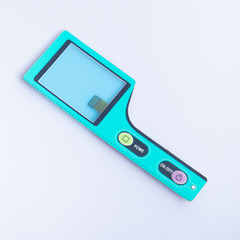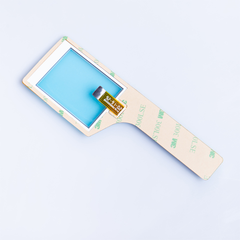Contact
Write to Us And We Would Be Happy to Advise You.
Do you have any questions, or would you like to speak directly with a representative?
By hqt
Membrane switch and panel in care simple in design, but extremely useful devices that combine 3 features: durability, aesthetics and low price. They are made of specially prepared films, most often polyester. As a result, the switch is resistant to chemical reagents, and the extraordinary mechanical resistance of the material guarantees at least 5 million actions of the integrated keys.
The switch is hermetic – resistant to damage by water, dust, etc. Decorative graphics are visible through the thickness of the foil, which makes it extremely resistant to all kinds of mechanical damage, such as scratches, and prevents the print from wearing off during the operation of the device.
The production technology allows you to adjust the switch to the individual specifics of each device, both in terms of the graphics uses, color palette, key embossing patterns, foil texture and the shape of the switch itself. A properly design and made switch will increase the attractiveness of the product – the well-known phrase ‘the customer buys with his eyes’ also works in the case of very specialized devices.
The production of the membrane switch and panel inc is largely bases on screen printing. Thanks to this, both the costs of preparing the production and the production are relatively low and incomparable with the costs of production of other types of switches.
Equally important is the ease with which you can modify the graphics and thus adjust the appearance of the device to the changing expectations of customers or contractors. The remarkable durability, resistance to mechanical damage and working conditions, and the aesthetics of the products resulted in best performance.

Foil (membrane) switches have long been an inseparable element of modern electronic devices. Their widespread use has become an economic and technical necessity at the time when electronic devices began to uses in practically all areas of life.
The main reason for the rapid increase in demand for foil switches is their relatively low price and the possibility of using them in difficult and unusual conditions (e.g. high humidity, high temperature). In addition, they meet a number of technical, operational and aesthetic requirements that cannot be provided by mechanical switches.
Foil switches work similarly to mechanical switches, i.e. pressing a key cause’s mechanical contact of the foil layers with the printed electrical circuit and its galvanic short circuit at the point of contact. Foil switches consist of many layers of foil. The top foil calls the facade. The electrical circuit paths, on
The other hand, call foil contacts. The basic technology uses in the production of the membrane switch and panel inc is screen printing. The foil facades print on polyester or polycarbonate foils, while the contacts on polyester foils. The printing on the facade is made on the underside of the foil, which prevents the paint from rubbing off during normal switch operation.
Electrical circuit paths print with an electrically conductive varnish. The foil facades print on polyester or polycarbonate foils, while the contacts on polyester foils. The printing on the façade makes on the underside of the foil, which prevents the paint from rubbing off during normal switch operation. Electrical circuit paths print with an electrically conductive varnish.
The foil facades print on polyester or polycarbonate foils, while the contacts on polyester foils. The printing on the facade makes on the underside of the foil, which prevents the paint from rubbing off during normal switch operation. Electrical circuit paths print with an electrically conductive varnish.
Membrane switch and panel inc characterize by:

Flat (mute) – the key action is not felt when it press. These membrane switch and panel inc have the greatest number of actions. They are the most reliable.
With embossing – you can feel the key when you press it. The keys can be embossed in the shape of a bowl, frame or the entire key. Only the canopy-shaped embossment “clicks” when press.
With contact plates – thanks to the use of a metal plate inside the switch, the key “clicks”
With molded keys – keys with significant convexities are obtained, unattainable by ordinary pressing methods. An additional advantage is the special visual effects of the poured keys.
The features of the membrane switch and panel inc combine with each other, e.g. the key can be with a plate and with an embossing or it can pour and with a contact plate.
In addition, many other additional solutions can uses in foil switches.
Do you have any questions, or would you like to speak directly with a representative?